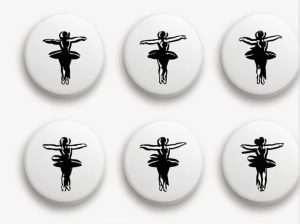The Mazurka is a traditional dance that originated in Poland and became popular across Europe in the 19th century. Known for its lively rhythm and distinctive steps the Mazurka is performed in triple meter (3/4 time) and features a strong accent on the second or third beat of each measure.
One of the key aspects of this dance is its unique footwork which includes a combination of steps jumps and slides. But how many steps does the Mazurka actually have? In this topic we’ll explore the main steps of the Mazurka its structure and how it is performed.
The Basic Structure of the Mazurka
The Mazurka is typically danced in a set of three steps per measure which gives it a distinctive rhythmic feel. The dance is characterized by quick movements small hops and an elegant yet energetic flow. While there are several variations of the Mazurka the most common steps include:
- Step and Hop (Mazurka Step)
- Gliding Step (Chassé)
- Heel Click Step (Stamping Motion)
- Turning Step (Pivot Movements)
Each of these steps contributes to the unique style of the Mazurka and varies depending on the region and tradition in which it is performed.
Step-by-Step Breakdown of the Mazurka
1. The Mazurka Step (Step and Hop)
This is the fundamental step of the Mazurka and is performed in a three-beat pattern:
- Step forward with the left foot (1st beat)
- Hop on the left foot while lifting the right foot slightly (2nd beat)
- Step forward with the right foot (3rd beat)
This pattern is then repeated with the opposite foot. The hop is what gives the Mazurka its light bouncy feel.
2. The Gliding Step (Chassé)
In some variations dancers perform a side-glide movement instead of the hop. This involves:
- Stepping to the side with one foot
- Sliding the other foot to meet it
- Repeating the motion in a smooth flowing manner
This step is often used in ballroom Mazurka styles and adds elegance to the dance.
3. The Heel Click Step (Stamping Motion)
A more dramatic variation includes a stamping movement where dancers lift one foot and bring it down forcefully while clicking their heels together. This creates a rhythmic accent that complements the Mazurka’s lively beat.
4. The Turning Step (Pivot Movements)
Some Mazurka styles include quick turns or spins where dancers rotate in small circles while maintaining the triple-step rhythm. This step is particularly common in partner dances adding flair and complexity.
Variations of the Mazurka
The Mazurka has evolved into different styles across Europe with each variation featuring unique step patterns. Some notable variations include:
1. Polish Mazurka
The original Polish version is the most traditional and features dynamic energetic steps with pronounced hops and heel clicks.
2. French Mazurka
In France the Mazurka became a popular ballroom dance with smoother gliding movements and more structured patterns.
3. Russian Mazurka
Russian dancers adapted the Mazurka with bigger dramatic jumps and expressive movements often performed in ballet productions.
4. Scandinavian Mazurka
In Sweden and Norway the Mazurka is danced in a slower more flowing manner with graceful turns and a relaxed pace.
How to Dance the Mazurka: Tips for Beginners
If you’re new to the Mazurka here are some tips to help you master its steps:
- Focus on the Rhythm – The 3/4 time signature is key to getting the right feel for the Mazurka. Count 1-2-3 1-2-3 as you step.
- Practice the Hop – The light hop is essential for the Mazurka’s characteristic bounce. Keep your movements controlled and graceful.
- Maintain Good Posture – Stand tall and keep your upper body relaxed while allowing your legs to move freely.
- Start Slow – Begin by practicing individual steps at a slow pace before gradually increasing your speed.
- Dance with a Partner – If dancing in pairs maintain a smooth connection with your partner matching their movements.
The Mazurka is a vibrant rhythmic dance with a rich history and multiple variations. While its exact number of steps can vary based on style and tradition the basic structure involves a three-step pattern with hops glides and turns. Whether you’re interested in learning the Mazurka for cultural appreciation ballroom dancing or personal enjoyment mastering its steps can be a rewarding experience.
By understanding the rhythm practicing the key movements and embracing the energetic nature of the Mazurka you can dance with confidence and style.


